In our Field Guide series, we’re offering quick tips you can use on the water to catch more fish on the fly, species-by-species. In this edition: We’re defending the often-overlooked panfish.
On the Mount Rushmore of fly fishing you’ll find species like the rainbow trout, tarpon, bonefish, and maybe even a smallmouth bass etched into the stone. These fish represent challenge, excitement, and aesthetic beauty that’s unmatched. But, if we had our figurative chisel in-hand, we’d tap-tap-tap a panfish right into the face of that monument. There we said it.
Hear us out for just a second. This is an article about fishing for panfish, so we have to start with the obligatory statement that “everyone starts on panfish and that makes it great.” This statement is true, but they’re so much more than that. They’re also beautiful fish. They’re prolific. They’re hard fighters. You can target them pretty much all year long. They’re good eating if you’re into that kind of thing. In other words, we think panfish are underrated, underappreciated, and shouldn’t just be considered good for beginners.
And that’s why we’re writing this article. Sure, you may not need a how-to on panfish, but the magic of SEO will (hopefully) put this article smack-dab in the middle of everyone’s Google search—also known as the Mount Rushmore of the internet. If no one else is going to bat for a bluegill, we sure as hell will.
Here are 5 principles of targeting panfish. But, first...
What is a Panfish?
Well, technically panfish are a lot of things. As you may have guessed, they’re small fish that easily fit into a pan—hence the name—and include species like the bluegill, green sunfish, redear sunfish, white crappie, black crappie, and sometimes can include perch as well. In this article, we’re going to use the term to include small, nesting fish like the bluegill and sunfish varieties. If they’re in freshwater and are small, catchable, and tasty, it’s probably a panfish.
Where and When to Find Them
The beauty of panfish is that they exist just about everywhere, which is why they’re so popular for kids, beginners, and pretty much every angler whether or not they want to admit it. They inhabit freshwater across the country, but are warmwater fish, so you’ll need to be looking in bodies of water that generally get above 70 degrees at some point during the year.
Other than that, you’ll find bluegills, sunfish, and others like it in just about any body of freshwater, particularly lakes. As for where they exist in the water, it depends on the season. Just like their sunfish cousins, bass, they love cover including weedbeds, docks, downed trees, and submerged rocks. During warmer months, they’ll gather in shallow water around these natural and man-made shelters, and will go a bit deeper—10 to 20 feet—during cold winter months.

Fish spawn in the spring and fall, and will create bedding areas on silt- and gravel-covered bottoms for their nests. It’s best to avoid fish on the nests to help preserve populations, and in clear water you’ll be able to spot nesting fish fairly easily—they look like someone dropped a very small grenade on the bottom and left a crater. If you can’t see the bottom, just be sure to not hit schools of fish too hard during spawning season—if they’re striking flies aggressively, they’re probably defending the nest, so catch-and-release a few and move on.
In general, when we think of panfish on the fly, we think of late spring and summer. All of these species will move to shallower water and feed more aggressively, making for a great time on the water. And, for those looking to fish small creeks, panfish can provide a great challenge and an early season opportunity, as they’ll become active more quickly than bass when temperatures begin to climb in the spring. Just be sure to move slowly and keep a low profile—small-creek panfish can be timid.
How to Fish for Them
Panfish are eager to eat, which means they’re a lot of fun to target. There are also plenty of ways to catch them, ranging from small streamers to terrestrial poppers to traditional trout flies with delicate presentations. These fish feed on insects primarily, but also other small fish, so if your fly looks the part you’re on the right track.
Our general rhythm is as follows: If it’s warm out, start with topwater flies—bluegill poppers, a foam spider, or even some stonefly imitations are greeting starting points. Cast to the edge of cover and give delicate movements—panfish are generally a bit spookier than bass. You’ll know quickly if they’re not feeding on top, which means it’s time to go sub-surface.
We’ll recommend some flies below, but think small and moderately heavy for bluegill, sunfish, and crappie. Oftentimes, these fish will hit a fly while it’s sinking in the water column, but the strike can be very slight, so use lightweight leaders and tippet and be sure to pay attention. Use twitchy, but not overly dramatic movement and be ready to set the hook. If you’re not getting hits move your fly deeper and deeper until you get action—some people even recommend sinking lines, though we don’t think it’s necessary.
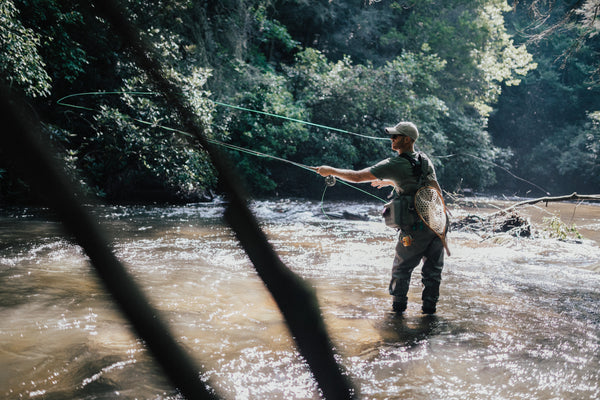
Lastly, you can either freeline a trout midge or use a hopper-dropper rig (our recommendation) to suspend a small fly, giving some slight twitches every few seconds. As we said, these fish can be spooky sometimes, so give them time and don’t move your fly too much—you should eventually get a hit. In Dave Whitlock’s article on bluegill fishing for Fly Fisherman, he makes a great point about the speed of retrieval and the size of the fish:
“After a lifetime of fly fishing for bluegill, I've also found that the slower you fish the fly, the more and larger fish you can expect. Bluegill and other sunfish often miss and quickly lose interest in fast-moving foods and flies.”
You’ll notice when targeting many panfish, that the smallest fish are very aggressive and quick to strike, but are also non-committal or simply too small to eat the fly. Slow, subtle, and realistic movement will be the key more often than not.
For colder weather, panfish can still be a great target, but you’ll need to be a bit more intentional. Find cover (generally downed trees, logs, and rocks) in 8 to 20 feet of water and you’ll generally find a school of crappie or something similar. Using a heavier setup, delicately draw your fly past the structure, keeping a tight line to detect subtle strikes from slower fish—although, even cold days can produce plenty of fish.
Gear to Use
When it comes to gear, you definitely don’t need to overthink it when it comes to bluegill. Rods ranging from 2-weights to 5-weights will be fine, with a 3- or 4-weight being optimal. For days when the fish are shallower, we’d highly recommend our 3-weight or 5-weight Revival fiberglass rod. It’s a blast to fight a feisty sunfish on that full-flex action. For days when you’re needing to strip line through a bit deeper water, a 4- or 5-weight Vesper or Drifter will be your best bet.
For tippet and leader, you’ll never need to go heavier than a 4x—and a 5x or 6x tippet is probably even better, particularly in clearer water. Lastly, be sure to have a pair of hemostats on-hand and debarb your hooks. Panfish have small mouths and it can be extremely difficult and deadly for the fish to remove a barbed hook that’s lodged deep.
Our Top 5 Flies for Panfish:
There are hundreds of flies that will work perfectly for panfish. So, instead of listing the “best,” we’ll list our favorites—just keep in mind that if the fly is small and looks like an insect, crustacean, or baitfish, you’re definitely in the right ballpark.
- Mini Bluegill Popper, in black or green
- SMP, in orange or black, sizes 8-12
- Clouser Minnow, size 6-10
- Beadhead Flash Bugger, size 8
- Foam Spider, size 8-10
There you have it. Even writing this article, we’re wishing we were casting to a downed tree, hoping for a strike from a redear sunfish. To us, panfish represent the sport at its most unpretentious and its simplest—fun, prolific fish that are accessible and ubiquitous, and people aren’t flocking to Instagram to post about it, either, which is a beautiful thing. They may not be as sexy as a tarpon, but sometimes you don’t need an adrenaline rush to enjoy the spot. You just need a sunny day and some hungry bluegills. That’s about it.


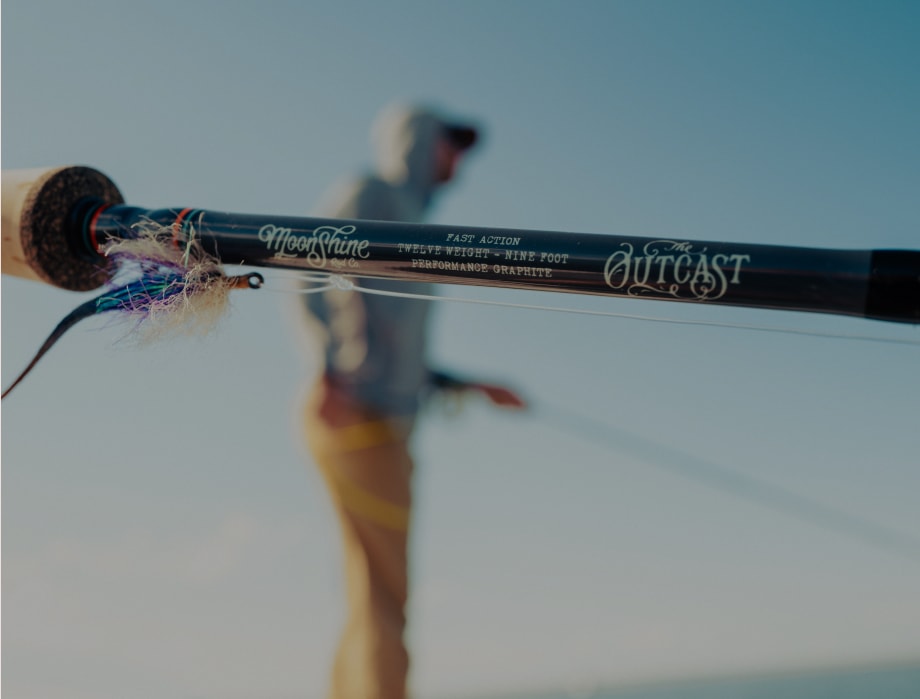
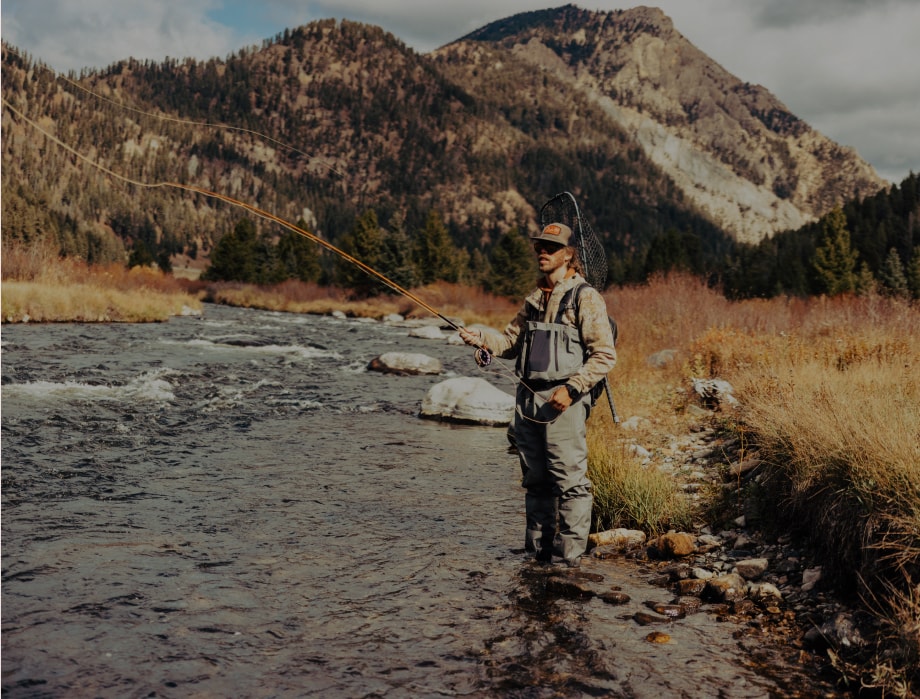
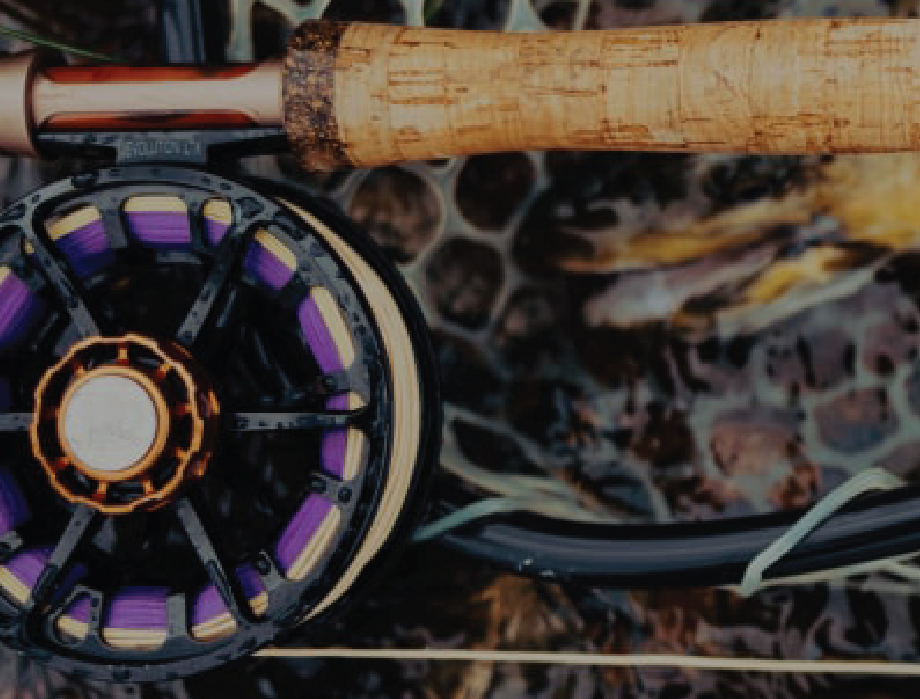


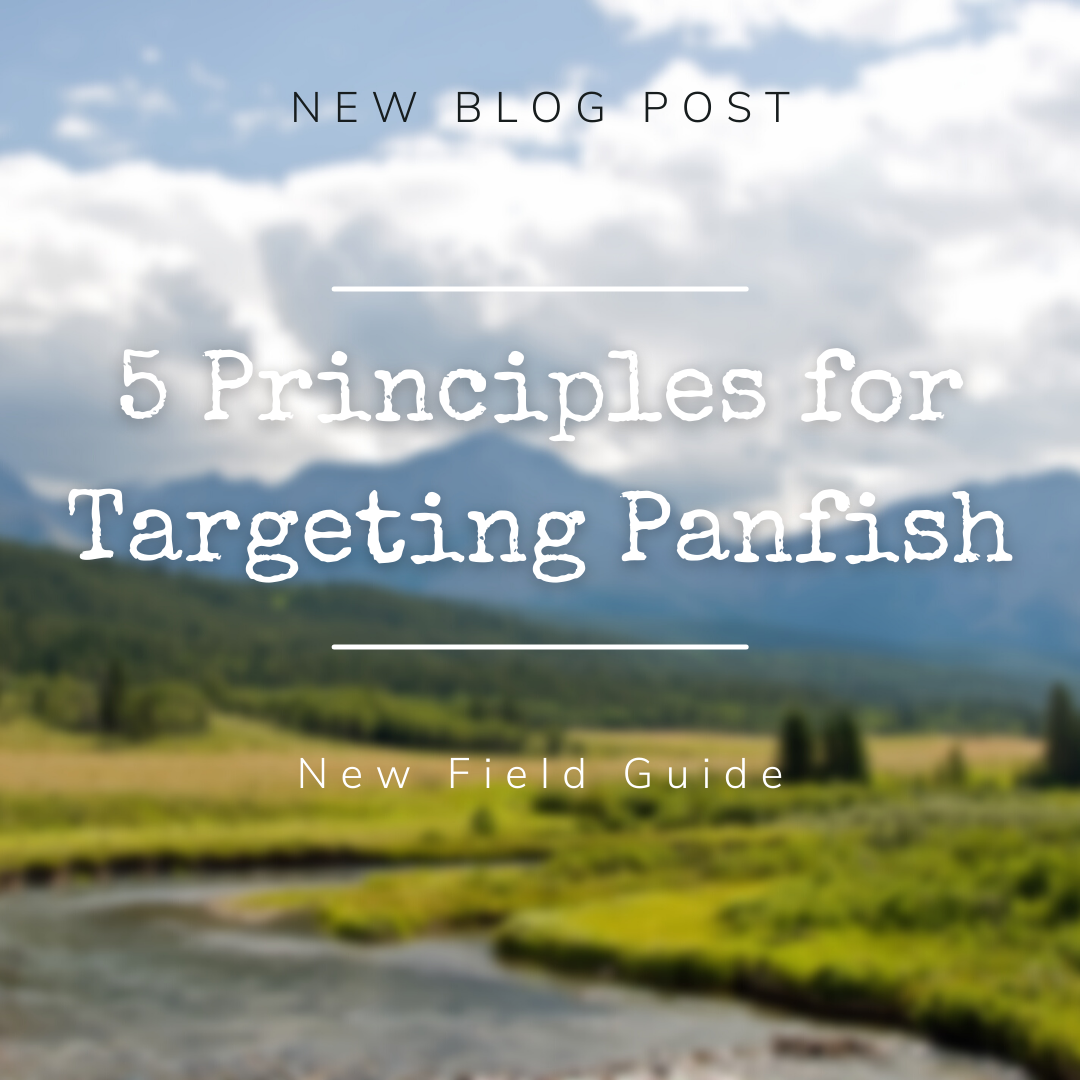
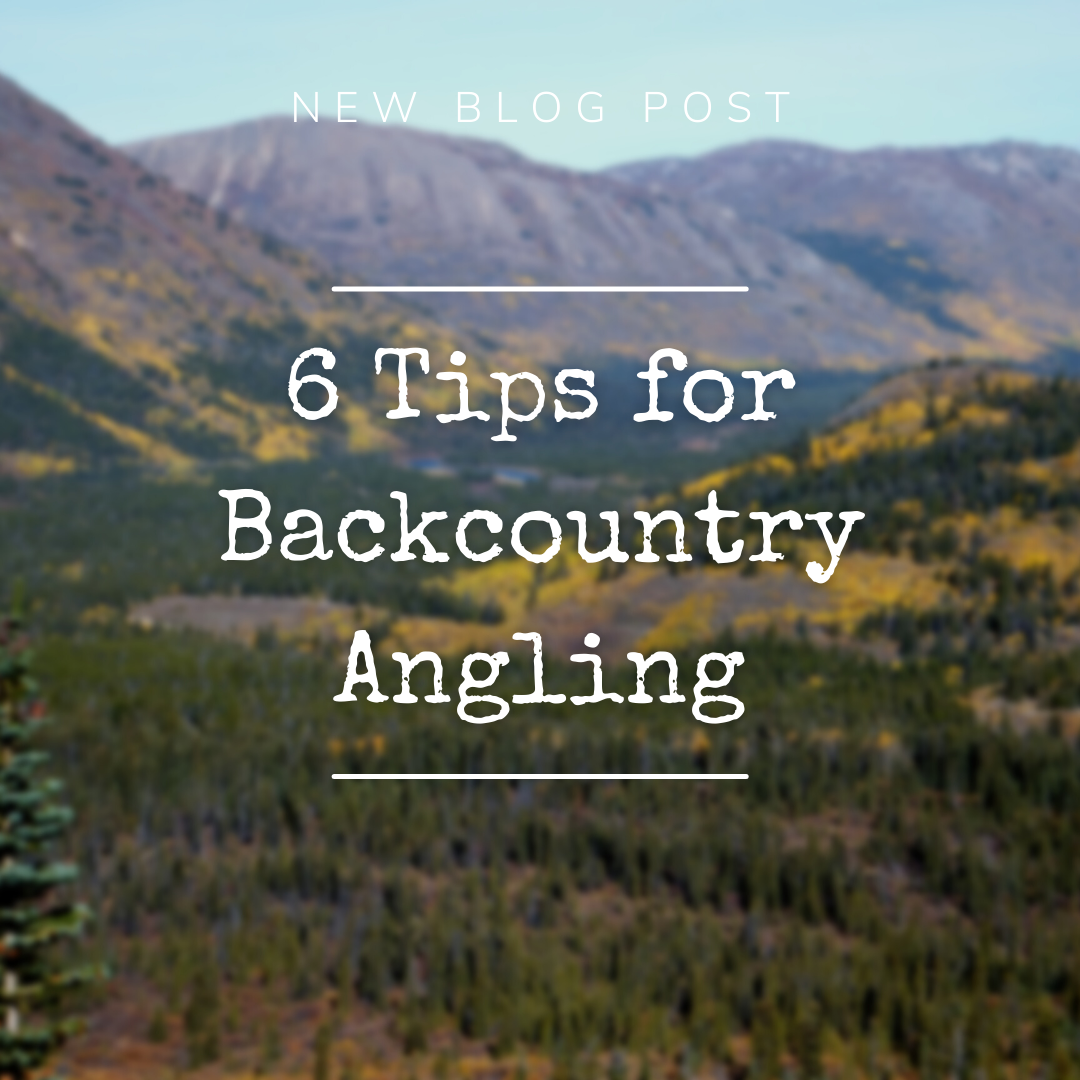
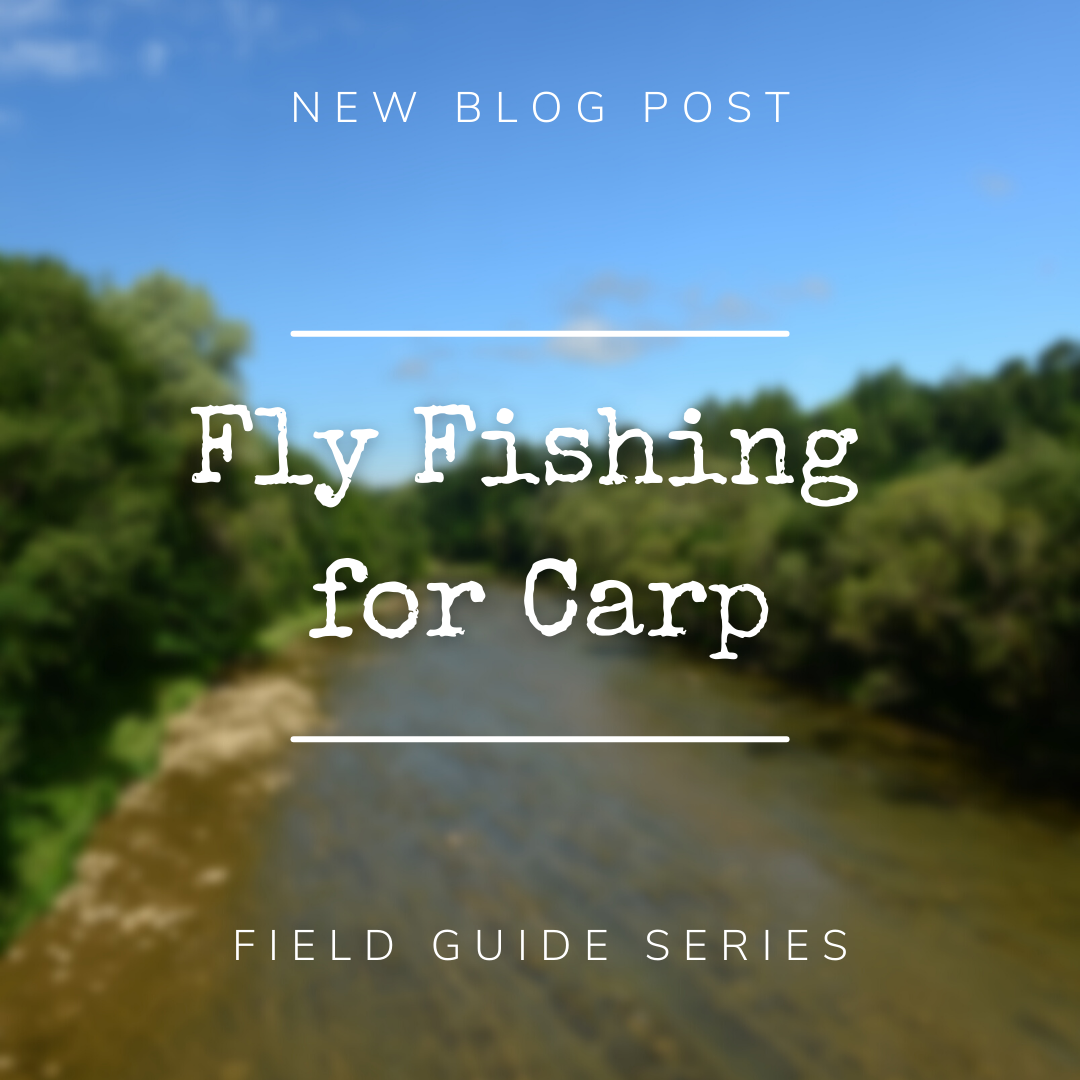
9 comments
Michael A DiGiampaolo
Thank You Very Much! Always Good getting Advise, & Ideas from more Experienced Fly Fishermen! I’ll be Saving this In a File! Thanks Again, & Semper Fi! Love Your Fly Rods, Spinning Rod Too!
Paul Huffman
I live on a small pond in central Florida (quite intentionally) and love my panfish on a fly. I either use my 5 wt. or my Tenkara rod. Our fish are often pretty large, as in two hands.
Almost any slow sinking fly works, typically on a size 8 with a 3x long shank. That makes it easier to grab with the forceps.
A trick I use to find the fish is to throw out a few small bread balls. The smaller fish will be close to the surface so I use a sinking fly to get underneath the small ones where the bigger ones are. I keep it simple when I tie them, chenille and micro fine silicone legs for a tail. Variety of colors depending on conditions.
The “tug is the drug”.
Rodney Folsom
Absolutely! I fish for them everyday. As a Grandpa, I need to know where the fish are for Fishing Fridays with the grandkids. Thanks for letting me know that I’m not the only one that has an affinity for the little warriors of the water.
Jay Schilling
Totally agree! Some of my favorite memories come from a pond where I caught so many tough fighting bluegill, I didn’t want to leave. I’ve used the “hopper-dropper” rig but with a bluegill Popper instead. Works for bass too! 😊🎣👍🏻
Leave a comment
All comments are moderated before being published.
This site is protected by hCaptcha and the hCaptcha Privacy Policy and Terms of Service apply.